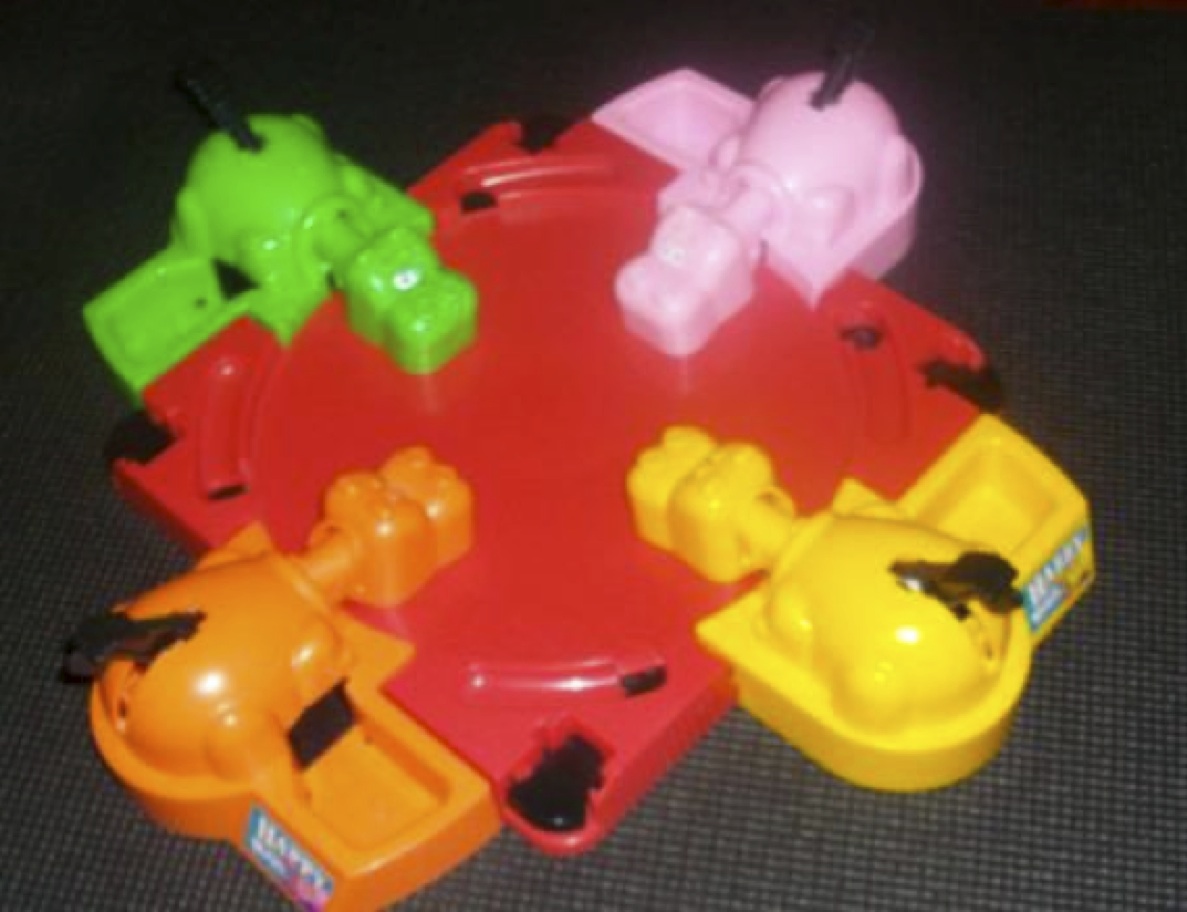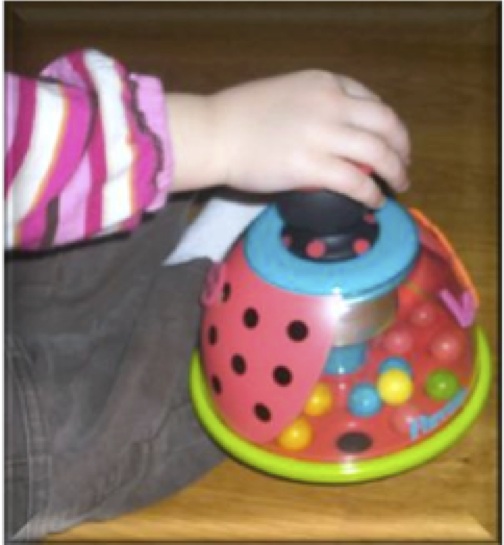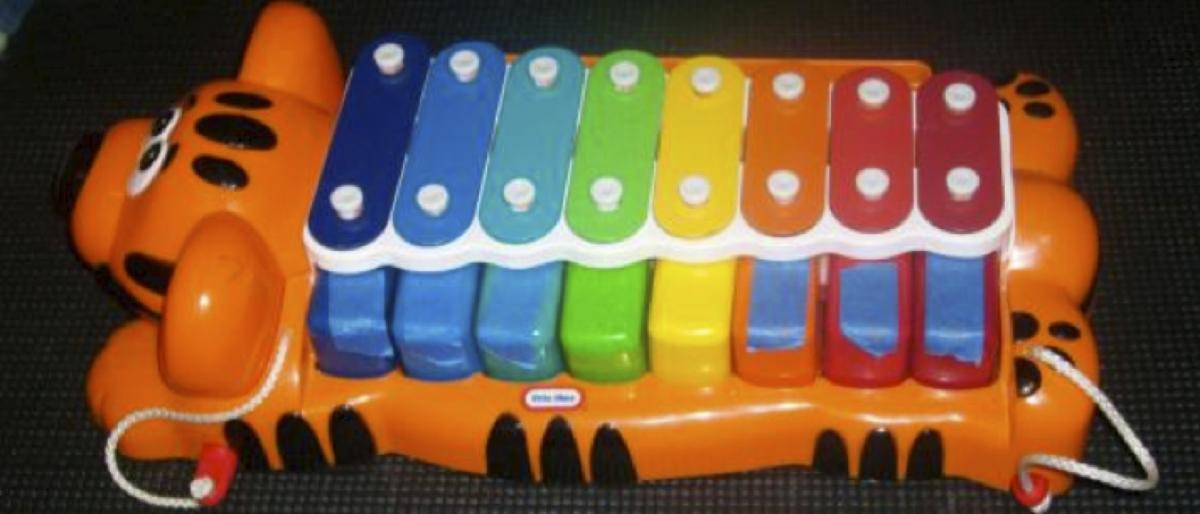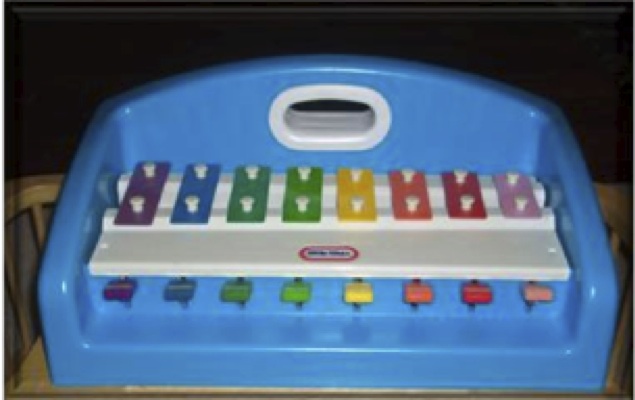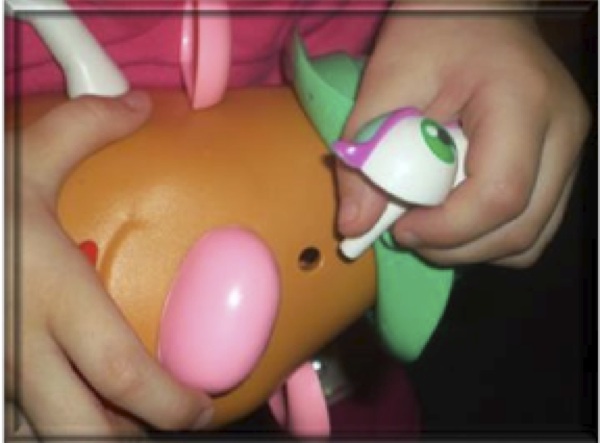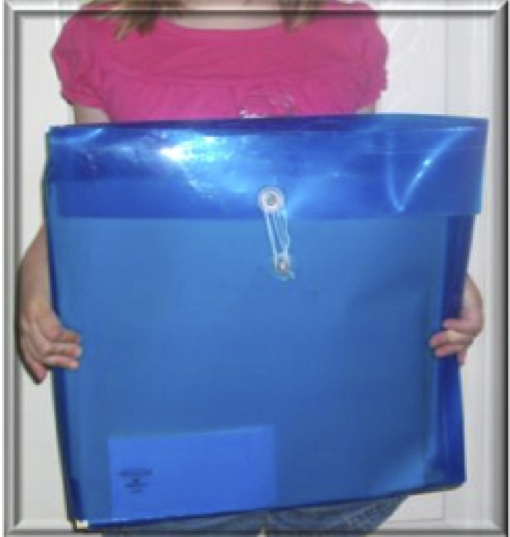This post is a continuation of my earlier post: http://www.pathstoliteracy.org/braille-babies This post focuses on developing hand and finger strength for using a braille writer, as well as on issues and concerns voiced by parents of children with visual impairments.
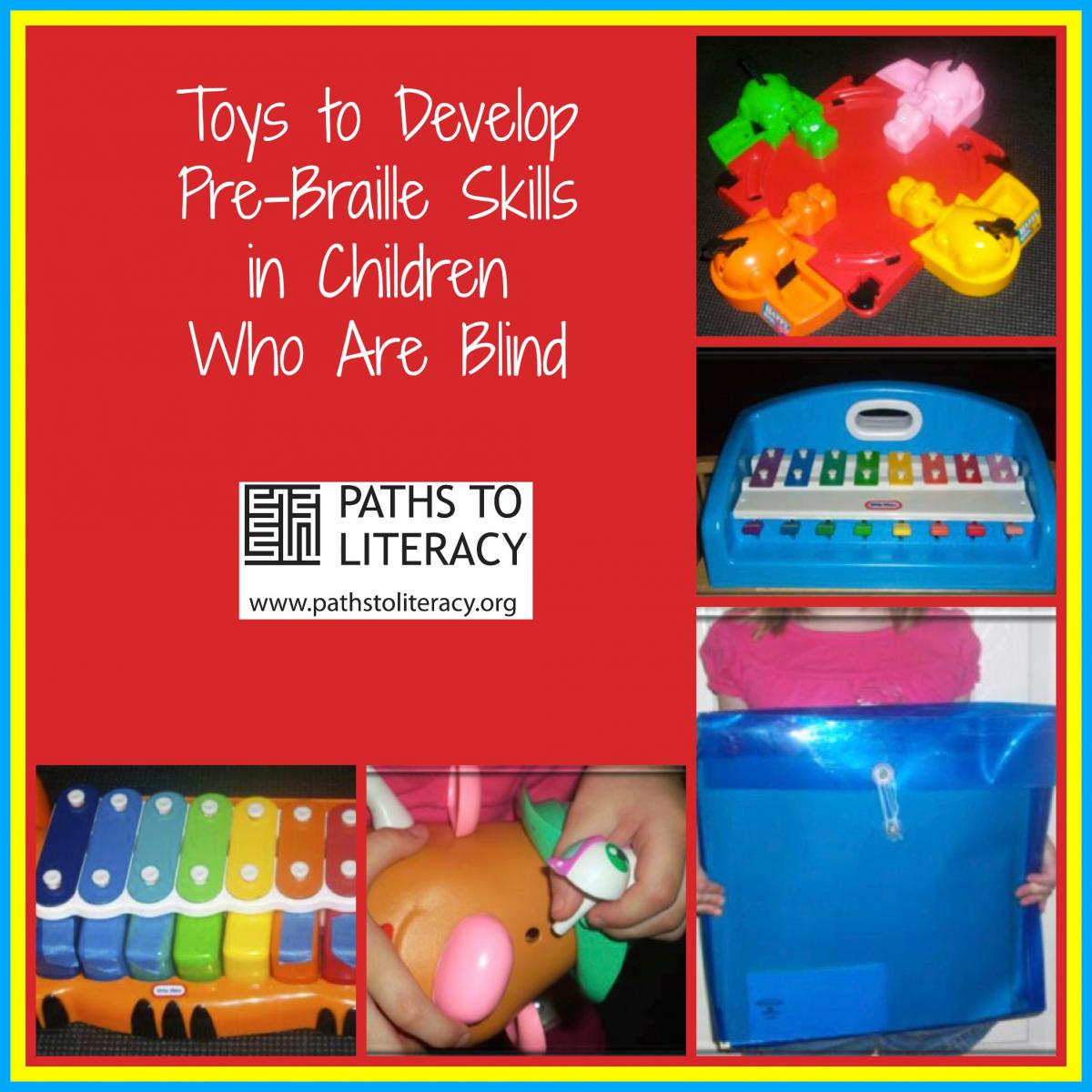
Toys Encouraging Brailling Concepts:
Parents often ask what toys are appropriate for their children who are blind or visually impaired. The good news is a number of toys are readily available that are perfect for children who are blind and are pre-braille learners. Below are examples of toys that help to develop hand and finger strength, and fine motor coordination.
Hungry Hippos:
This game requires the child to utilize a lever by pressing on it to make a Hippo eat a marble. One does not need to see the marbles to participate and, if the game is placed on a hollow surface, the sound the marbles make provides auditory feedback. Using this lever to work the Hippo is similar to the process of pushing on the keys of a braille writer. By practicing this skill on the Hungry Hippos Game, the child can work on this fine motor skill in a fun way.
Push and Spin:
Many parents participating in Braille Babies complained that their children were unable to physically handle the process of pushing on a brailler, so parents were encouraged to introduce toys with similar concepts early on in the child’s life. Another example of this is the toy pictured below that helps promote the development and strength of the arms, wrist and hand for pushing on the braillewriter.
Xylophones and Pianos:
Braille writing on a standard braille keyboard or writer requires good posturing, ergonomic positioning, dexterity of the fingers and coordinated movements of various fingers for different letters. Parents who participated in Braille Babies and had older children offered comments that some of their children had difficulty utilizing the correct fingers for brailling. Therefore, parents were encouraged to introduce toys with keys to push early in the child’s life. Toy pianos can be used to encourage using each finger in isolation or combination with other fingers. Tape was added to the six keys on one piano to help a specific child tactually discern the keys.
The other piano/xylophone pictured below has keys with more separation between them to encourage finger placement and coordinated pressing.
Parents were encouraged to use these toys with children to also work on posturing. Braille can be very fatiguing to write for many children, so helping them use good posture early on will facilitate a smooth process for when they use the braille writers. Parents were also instructed to ensure the child’s feet were planted firmly on the ground or step stool and to utilize angles recommended for optimal positioning.
Potato Head provides an excellent, tactile play experience for children who are blind or visually impaired. Children benefit from learning about putting together parts of the body on the Potato Head, but also, holding some of the parts and finding the correct slot to place the peg is an early skill for developing slate & stylus writing.
Supporting Tips and Suggestions
Throughout the Braille Babies training programs, parents were provided with suggestions for aiding them in some common issues. Below are the issues and suggestions.
Issue: Braille storage:
Braille can take up a lot of space and access to folders and containers specifically for braille can be costly and usually have to be ordered, especially for larger braille papers that are 11x11.5. To remedy this dilemma, go to your local craft store and purchase inexpensive scrapbook paper holders. These can be frequently purchased for just a couple dollars and come in a variety of styles. Parents can purchase hard cases for scrapbook paper for the items they wish to preserve that their child created with braille on large paper. File folders for this size of paper can be used for organizing materials and blank braille paper and closing pocket paper protectors can be used to transport large braille paper assignments to and from school.
Issue: Child continues to look visually at materials presented in braille
This is common for children who have useable vision and are learning braille. A number of these children object to wearing a blindfold, so consider placing the materials under a portable stand or bed tray desk so the child’s hands and material are covered by the stand. Also, consider using scrapbook paper with busy patterns for brailling materials for children who try to read braille visually.
Issue: Materials move around
It is common for materials and supplies children are using to move around, such as the toy pianos other objects. Make certain to have shelf liner handy that has a skid proof texture. This shelf liner is not adhesive and can be placed on surfaces and picked up for later use.
Participants in Braille Babies programs were provided with methods for promoting literacy that are auditory. This included methods to enhance vocabulary development, comprehension, phonemic awareness (letter sounds) and rhyming games. Most of all, parents were encouraged to read to their children, even if braille books were not readily available to them. They were taught how to adapt books with tactile elements and textures from around the house and were provided with resources for obtaining braille and tactile books. Participants were provided with braille practice worksheets to use with children and were given indicators to look for that may signal the child could benefit from occupational therapy to enhance fine motor skills necessary for braille reading and writing. Ultimately, participants were exposed to the fun side of braille that eased their fears of the basics of braille. Moreover, by using toys and easy to manipulate items, parents felt more confident in their ability to interact with their children and in braille activities with developmentally appropriate materials. This alleviated previous fears over braille and facilitated a healthier perspective for encouraging braille literacy with their children.
The Braille Babies program has served as more than a platform for encouraging braille literacy in young children. I would like to thank those who have shared their stories with me that continue to inspire this project and have really enjoyed getting to know families who do so much for their children. Further research and development is currently being pursued on the Braille Babies program. This includes a full curriculum parents can implement with their children with planned, thematic units and scheduled activities for children to do on a daily basis to encourage braille literacy. If you are interested in being part of research for this program or are interested in attending a Braille Babies seminar, either in person or online, please email me at krwa@verizon.net
Copyright notice: photos and content in this article are under copyright and may not be duplicated without written permission from Kimberly Avila.

